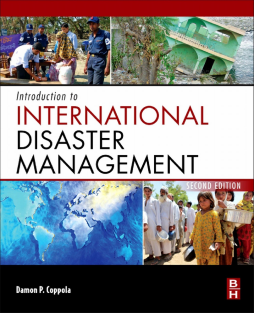
Additional Information
Book Details
Abstract
Disaster management is a vibrant and growing field, driven by government spending in the wake of terrorist attacks and environmental debacles, as well as private-sector hiring of risk managers and emergency planners. An ever-increasing number of practicing professionals needs a reference that can provide a solid foundation in ALL major phases of supervision – mitigation, preparedness, response, communications, and recovery. As climate change leads to further costly catastrophes and as countries around the world continue to struggle with terrorism, the demand for solutions will only grow. This revised edition of Coppola’s revered resource meets said demand head-on with more focused, current, thoughtfully analyzed, and effective approaches to disaster relief.
- Expanded coverage of global approaches to disaster management with enhanced data and research on disasters around the world, including Cyclone Nargis, the H1N1 pandemic, and the tsunami in American Samoa
- More material on risk management, mitigation, myths that affect behavior during crises, and post-disaster evaluation of the response
- Up-to-date information on the role of aid organizations and international financial institutions like the World Bank in disaster response, as well as commentary on the latest research in disaster management and policy studies
"Damon Coppola's Introduction to international disaster management is a single volume sourcebook that makes excellent use of full colour graphics and has numerous inset boxes highlighting aspects of the topics under discussion. The book follows a logical progression starting with the history of disasters and ending with details of disaster management agencies (governments, NGOs, multilateral organisations), where they are located within national government structures, and what they do. The bulk of the book is given over to consideration of hazards, risks and vulnerability, and the four stages of traditional disaster management namely: mitigation, preparedness, response, and recovery. A final chapter deals briefly with special considerations in relation to disasters covering such diverse topics as the media, political will, donor fatigue, state sovereignty, climate change, terrorism, and pandemics. This book is an excellent starting point for the study of disaster planning providing both global perspective and local detail."--Colin Perry, The Brunei Times
